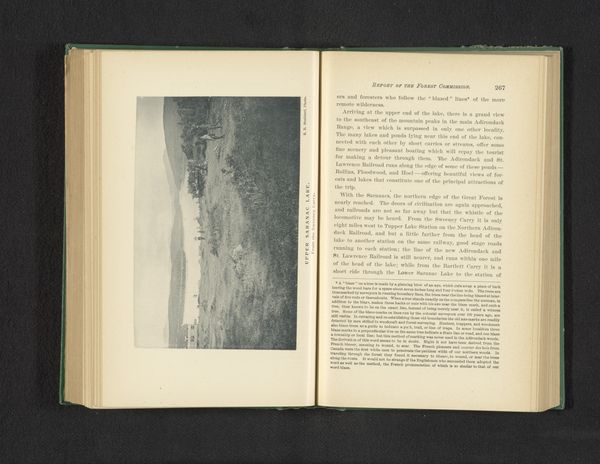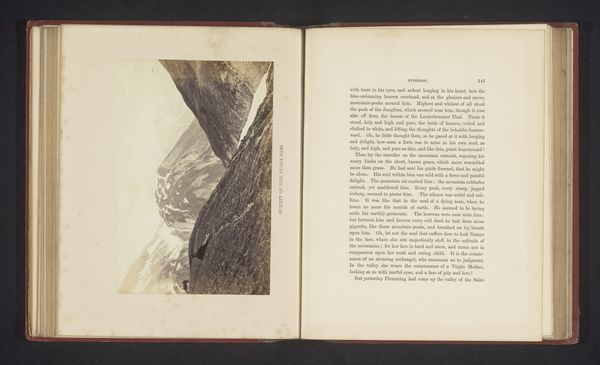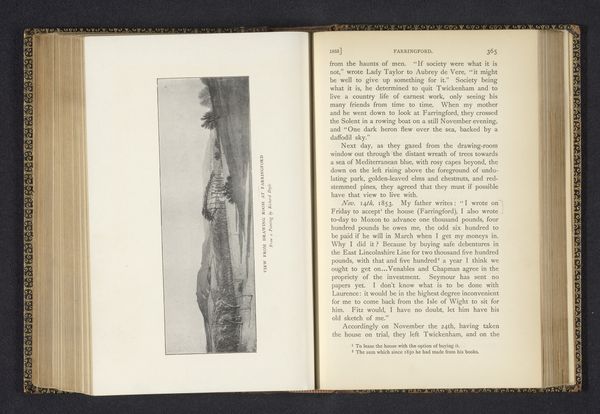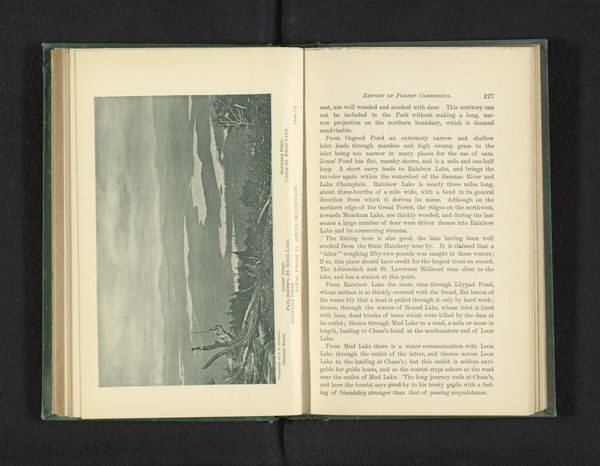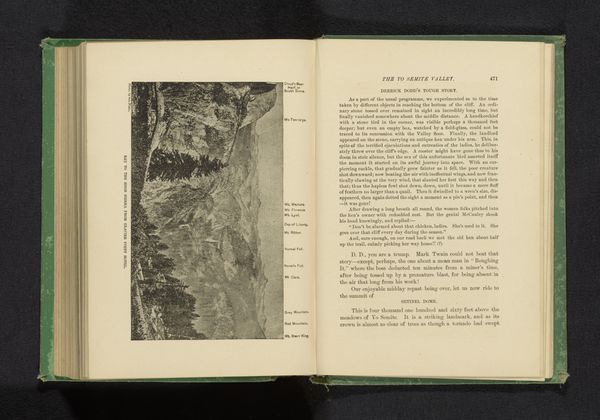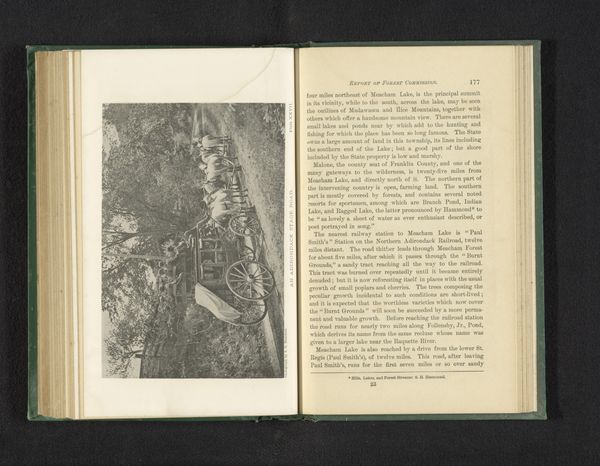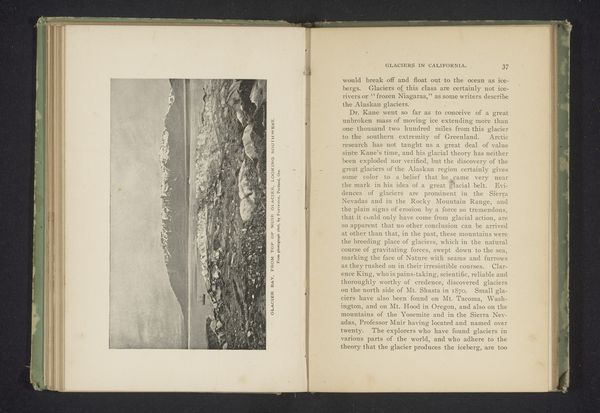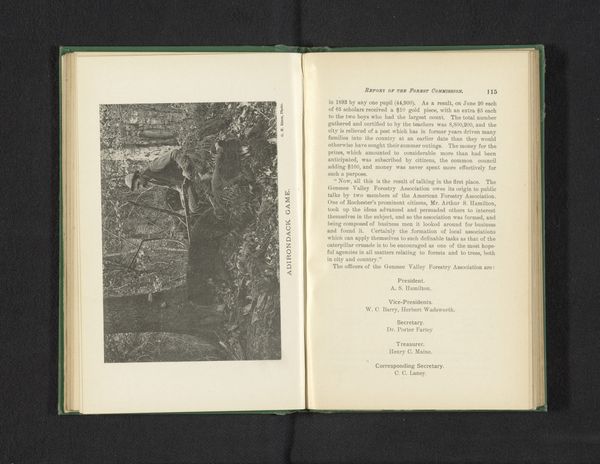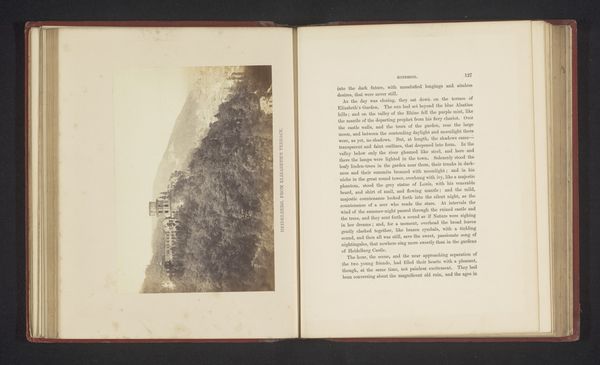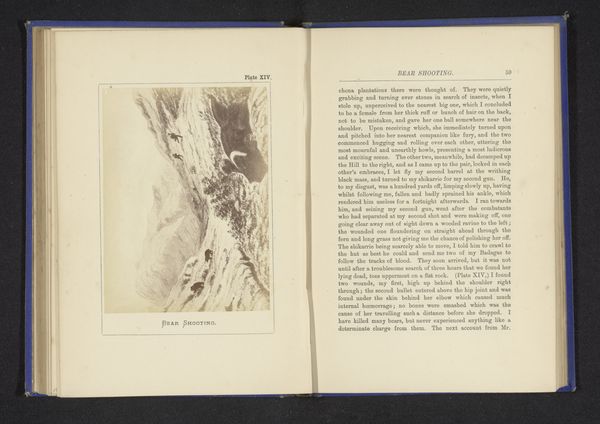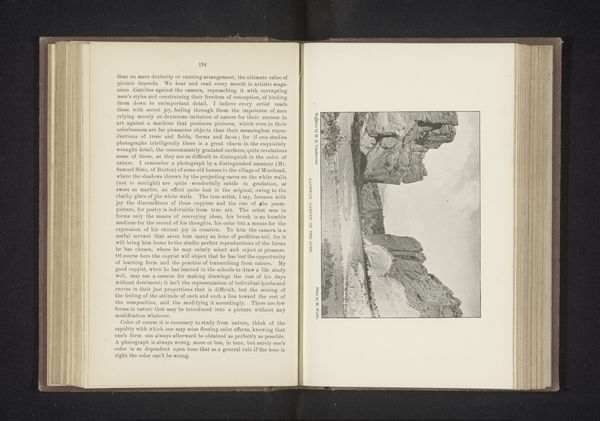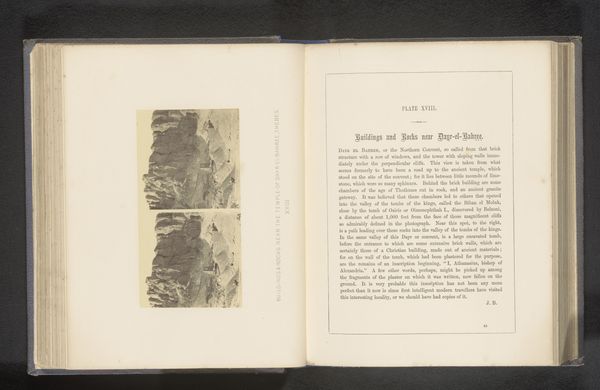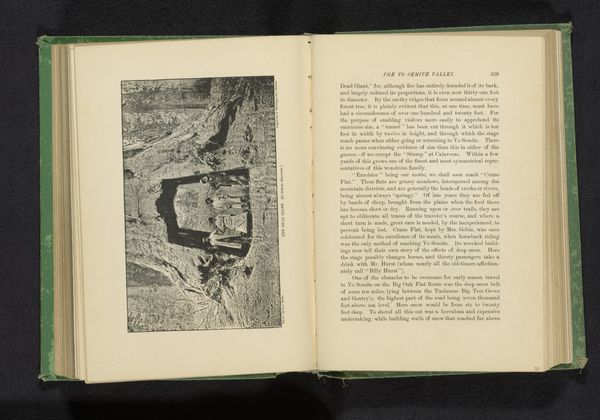
print, photography
# print
#
landscape
#
photography
Dimensions: height 113 mm, width 177 mm
Copyright: Rijks Museum: Open Domain
Editor: So, here's "Keene Valley," a photographic print from 1891 by Seneca Ray Stoddard. The scene's quite dramatic, focusing on the immense scale of the mountains... but there's this tiny little road snaking through. What strikes you about it? Curator: What immediately stands out to me is how this image fits into the 19th-century discourse around tourism and wilderness. We see the ‘picturesque’ being marketed—this romantic idea of the wilderness is made palatable, almost consumable, through accessibility, evident by that winding road you mentioned. How do you think this image might have functioned in its original context? Editor: That’s a great point! The image definitely makes the area seem appealing and not too treacherous. Maybe it was used in promotional material to draw tourists in. But it’s interesting—is Stoddard simply capturing the scene, or is he participating in creating the *idea* of Keene Valley? Curator: Precisely! It raises questions about the power dynamics inherent in visual representation. Whose version of "Keene Valley" are we seeing? The indigenous inhabitants' experience of that same space would be radically different. This image serves a particular purpose—to encourage visitation, consumption, and a specific interaction with the landscape. Notice how it emphasizes a feeling of insignificance within nature, a popular theme with European settlers. Do you see any potential ideological problems arising from the promotion of landscape that suggests accessibility to "all?" Editor: I never thought about it that way. So, what appears to be a simple landscape photo actually speaks to broader socio-economic narratives! Wow. Curator: Exactly! And by analyzing the photograph within this context, we reveal the complex relationship between art, ideology, and the construction of public space. Understanding the cultural function enriches our appreciation. Editor: That really changes how I look at landscape photography now. I'll definitely consider the purpose and target audience from now on. Thanks!
Comments
No comments
Be the first to comment and join the conversation on the ultimate creative platform.
